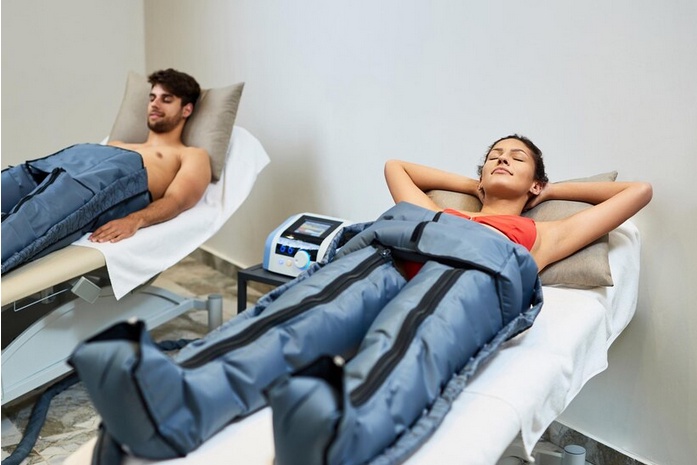Decompression table are fundamental tools used in various fields such as diving, aviation, and medicine. They play a crucial role in ensuring the safety and well-being of individuals operating in environments with significant pressure differentials. Understanding decompression tables, their principles, and applications is paramount for professionals across these sectors. This essay delves into the intricacies of decompression tables, shedding light on their significance, functioning, and implications.
Understanding Decompression Tables
Decompression tables are essentially algorithms or charts used to plan the ascent of divers or pilots from high-pressure environments to lower-pressure environments safely. They provide guidelines for the gradual release of pressure to prevent decompression sickness, commonly known as "the bends." The bends occur when dissolved gases, mainly nitrogen, form bubbles in the bloodstream and tissues due to rapid decompression, leading to severe and potentially fatal consequences.
Principles of Decompression Tables
The principles underlying decompression tables revolve around managing the gradual release of pressure to allow the body to eliminate excess gases safely. These tables consider various factors such as depth, time spent at depth, ascent rate, and gas mixture used during the dive or flight.
One of the fundamental principles is the concept of partial pressure, which states that the total pressure exerted by a mixture of gases is equal to the sum of the pressures exerted by each gas in the mixture. This principle is crucial in determining the safe limits for exposure to different gases at varying depths.
Another principle central to decompression tables is the concept of tissue saturation. As a diver or pilot descends to greater depths, the tissues absorb more gases, primarily nitrogen, leading to saturation. To avoid decompression sickness during ascent, the gradual release of pressure is necessary to allow the elimination of excess gases from the tissues without forming bubbles.
Applications of Decompression Tables
Decompression tables find applications in a variety of contexts, primarily in diving and aviation.
In diving, decompression tables are used to plan and execute dives safely. Divers refer to these tables to determine the duration and depths of dives, as well as the required decompression stops during ascent. Failure to adhere to these guidelines can result in decompression sickness, posing serious health risks to divers.
In aviation, decompression tables are employed to ensure the safety of pilots and passengers flying at high altitudes where the air pressure is significantly lower. These tables provide guidelines for the gradual decompression of aircraft cabins to maintain a safe and comfortable environment onboard.
Factors Influencing Decompression Tables
Several factors influence the design and utilization of decompression tables, including:
-
Depth: The depth of the dive or flight directly impacts the amount of pressure exerted on the body and the rate of gas absorption by tissues. Deeper dives or flights require longer decompression times to allow for the safe elimination of excess gases.
-
Time: The duration of exposure to high-pressure environments affects tissue saturation levels. Longer dive or flight times necessitate more extensive decompression procedures to prevent decompression sickness.
-
Gas Mixture: The composition of the breathing gas used during dives or flights influences the rate of gas absorption and elimination. Different gas mixtures may require adjustments to decompression tables to ensure optimal safety.
-
Ascent Rate: The speed at which a diver or aircraft ascends from high-pressure environments plays a crucial role in decompression safety. Rapid ascents can lead to the formation of gas bubbles in the bloodstream and tissues, increasing the risk of decompression sickness.
Challenges and Limitations
Despite their importance, decompression tables have certain limitations and challenges:
-
Complexity: Decompression tables can be complex and require a thorough understanding of dive physics and physiology to interpret and apply effectively.
-
Individual Variability: The response to decompression varies among individuals due to factors such as age, fitness level, and health status. Decompression tables may not account for these individual differences adequately.
-
Environmental Factors: Environmental conditions such as water temperature, current strength, and altitude can influence decompression requirements, making it challenging to create universal guidelines applicable in all situations.
-
Technology Advancements: The emergence of new technologies such as dive computers and altitude chambers has led to debates regarding the relevance and efficacy of traditional decompression tables.
Conclusion
Decompression tables play a crucial role in ensuring the safety and well-being of individuals operating in high-pressure environments such as divers and pilots. By providing guidelines for the gradual release of pressure during ascent, these tables help mitigate the risk of decompression sickness and its associated consequences. However, they are not without limitations, including complexity, individual variability, and environmental factors. Despite these challenges, decompression tables remain invaluable tools in various industries, highlighting the importance of continued research and innovation in this field. As technology evolves and our understanding of decompression physiology deepens, the development of more effective and adaptable decompression strategies will undoubtedly enhance safety standards and optimize performance in high-pressure environments.


No comments yet